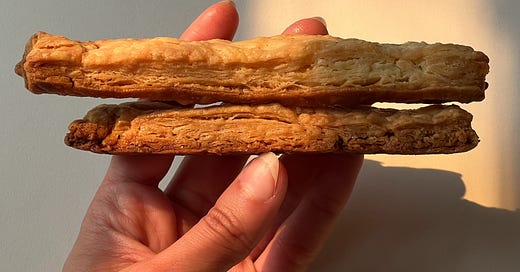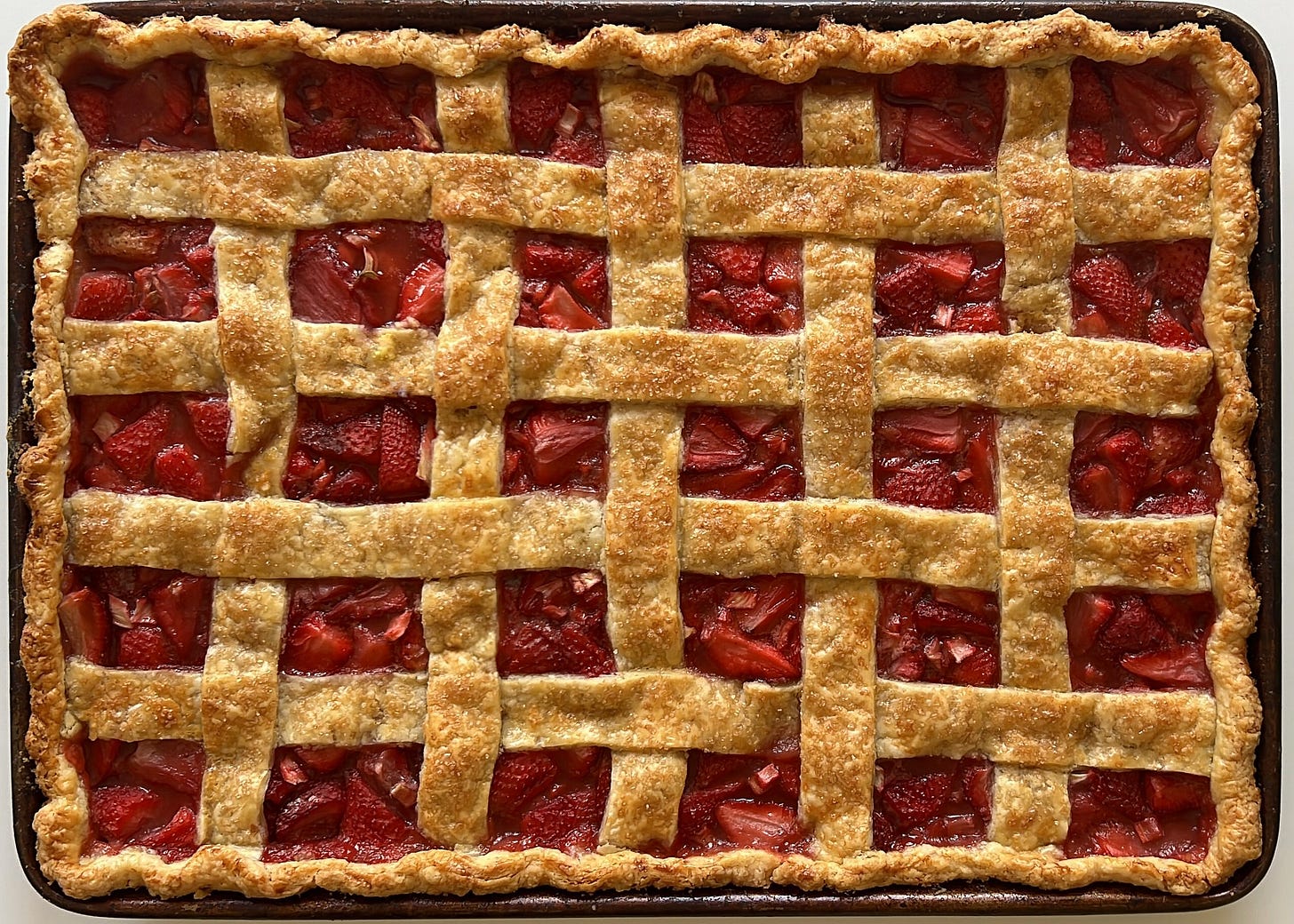Working with pie crust is an exercise in patience and humility. As a young baker, pie dough really challenged my composure. It cracks and sticks, the edges are often craggy, and so often, you will painstakingly cut and fold intricate designs only for it to come out of the oven warped and unrecognizable. You plan, and pie crust laughs.
It took me a long time to realize this, but the key is just to let it all happen. If it splits as you’re rolling it out, press it together and just keep going. If it tears when you’re transferring it to the pan, patch it with a little bit of scrap dough. Accept the rustic charm the oven will inevitably add to your design. Just don’t panic. It’s all fine.
I’ve written several versions of this pie crust recipe to suit different sizes and applications. The proportions remain the same, I’ve just done the calculations for you. I’ve also included a number of tips to help set you up for success. You can apply this recipe to fruit and custard pies, galettes, savory tarts and quiches, but of course, I’ll follow up with some ideas of my own, so don’t forget to subscribe!
Keep reading with a 7-day free trial
Subscribe to early girl to keep reading this post and get 7 days of free access to the full post archives.






